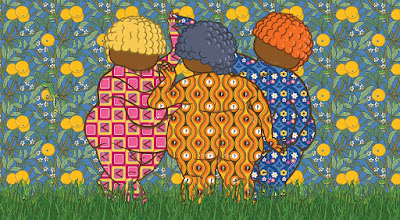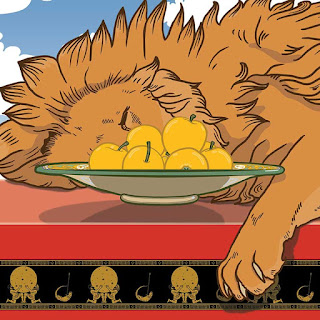"The Three Hesperides"
digital painting print on gatorfoam
100x182x2cm, 2020
Le tre Esperidi nella mitologia greca si di differenziavano dalle Cariti, le Grazie, per le vesti. Mentre le Grazie venivano rappresentate nude, le Esperidi erano vestite. Qui sono ricoperte da tute aderenti a motivi optical con tre simboli runici: Kenaz, Wunjo, Fehu. Questo lavoro appartiene alla serie intitolata "Way back into Soul", in cui sono rappresentati antichi miti in chiave moderna.
The three Hesperides in Greek mythology differed from the Charites, the Graces, for their clothes. While the Graces were represented naked, the Hesperides were clothed. Here they are covered with adherent suits with optical motifs with three runic symbols: Kenaz, Wunjo, Fehu. This work belongs to a series entitled "Way back into Soul", in which ancient myths are represented in a modern way.




